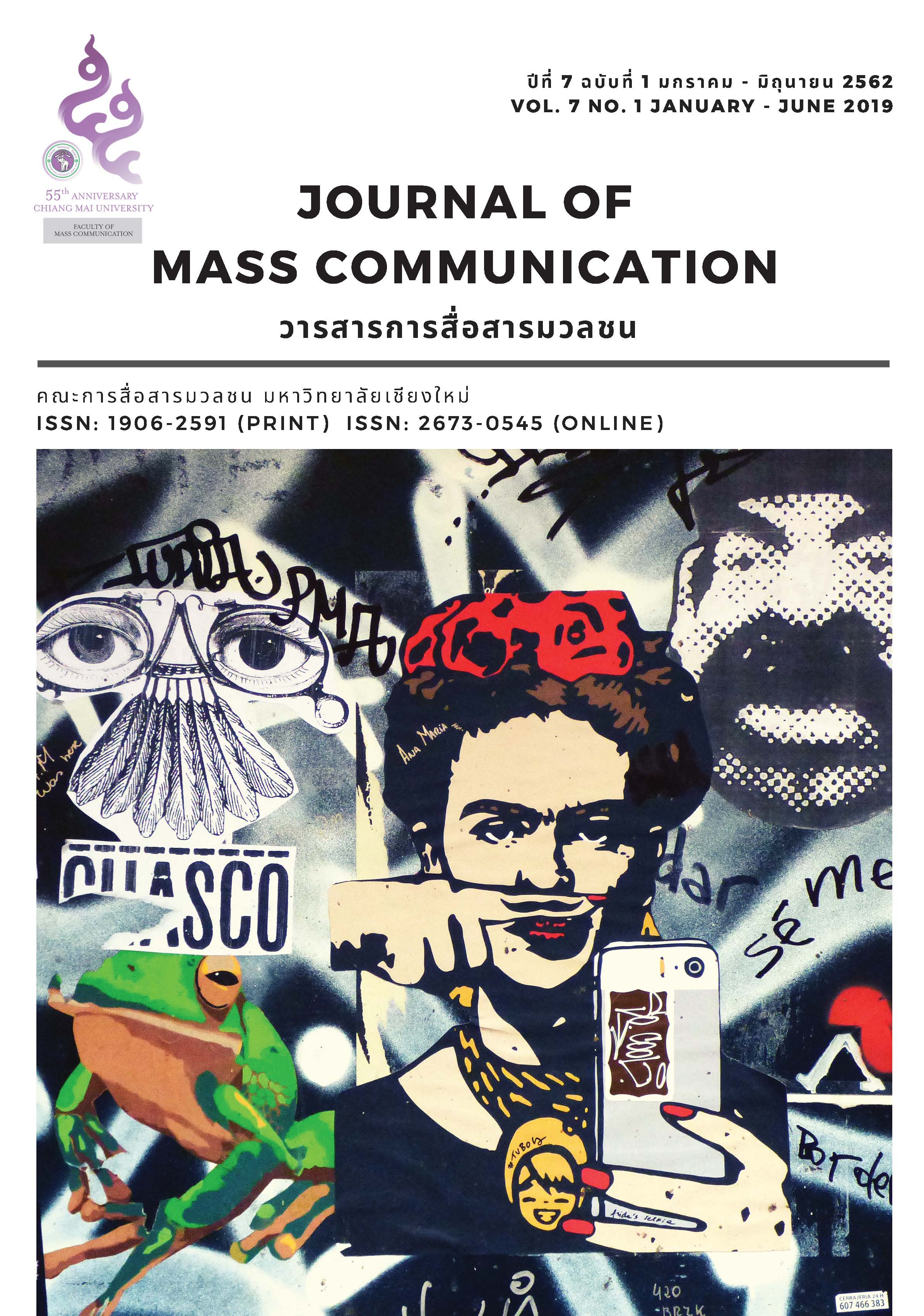Media Literacy of Thai Monk in the Northern Region of Thailand
Main Article Content
Abstract
Buddhist monks are part of the Thai society as religious personnel, who have to acquire information from media and communicate the messages to people in their community through propagations. Media literacy, therefore, is an important issue for monks. In this study, the purpose is to study the media literacy of monks and novice in the Northern part of Thailand by examining its relationship between media literacy level and determinant factors on media literacy such as monks’ age, level of secular education, level of Pali education, media exposure, and media usage. Results indicate that the level of secular education and the frequency monks and novices access to content via the internet are determinants factors on media literacy level. Buddhist monks who have a higher level of secular education and who access to media via the internet regularly have a higher level of media literacy.
Article Details

This work is licensed under a Creative Commons Attribution-NonCommercial-NoDerivatives 4.0 International License.
ลิขสิทธ์ที่ผู้เขียนบทความต้องยอมรับ
References
จาก https://www.onab.go.th/
สำนักงานสถิติแห่งชาติ. (2555). การสำรวจสภาวะทางสังคมและวัฒนธรรม พ.ศ.2554. สืบค้นเมื่อ 11 กันยายน 2558,
จาก https://www.nso.go.th/
Aarsand, P., & Melander, H. (2016). Appropriation through guided participation: Media literacy in children ׳s everyday lives. Discourse, Context & Media, 12, 20-31. Retrieved from https://doi.org/10.1016/j.dcm.2016.03.002
Aczel, P. (2014). Reconceptualizing (new) media literacy. Perspectives of Innovations, Economics & Business, 14(1), 47-53. doi:10.15208/pieb.2014.06
Akti, S., & Gürol, A. (2012). Determining the relationship between media literacy and social skills. Procedia - Social and Behavioral Sciences, 64, 238-243. Retrieved from https://doi.org/10.1016/j.sbspro.2012.11.028
Diergarten, A. K., Möckel, T., Nieding, G., & Ohler, P. (2017). The impact of media literacy on children’s learning from films and hypermedia. Journal of Applied Developmental Psychology, 48, 33-41. Retrieved from https://doi.org/10.1016/j.appdev.2016.11.007
Flavell, J. H., Flavell, E. R., Green, F. L., & Korfmacher, J. E. (1990). Do young children think of television images as pictures or real objects?. Journal of Broadcasting and Electronic Media, 34(4), 399-419. Retrieved from https://dx.doi.org/10.1080/08838159009386752
Fletcher-Flinn, C. M., & Gravatt, B. (1995). The efficacy of computer assisted instruction (CAI): A meta-analysis.
Journal of Educational Computing Research, 12(3), 219-241. Retrieved from https://doi.org/10.2190/51D4-F6L3-JQHU-9M31
Harshman, J. (2018). Developing global citizenship through critical media literacy in the social studies. The Journal of Social Studies Research, 42(2), 107-117. Retrieved from https://doi.org/10.1016/j.jssr.2017.05.001
Kirkorian Heather, L., & Anderson Daniel, R. (2009). Learning from education media. The Handbook of Children, Media, and Development, 188-213. doi:10.1002/9781444302752.ch9
Kulthida, T., & Mega, S. (2017). The current state and influential factors in the development of digital literacy in Thailand’s higher education. Information and Learning Science, 118, 235-251. doi:10.1108/ILS-11-
2016-0076
Mares, M.-L., & Pan, Z. (2013). Effects of Sesame Street: A meta-analysis of children’s learning in 15 countries. Journal of Applied Developmental Psychology, 34(3), 140-151. Retrieved from https://doi.org/10.1016/j.appdev.2013.01.001
Mares, M.-L., Sivakumar, G., & Stephenson, L. (2015). From meta to micro: Examining the effectiveness of educational TV. American Behavioral Scientist advance online publication. 59(14), 1822-1846. Retrieved from https://dx.doi.org/10.1177/0002764215596555
Perryman, A. A., Fernando, G. D., & Tripathy, A. (2016). Do gender differences persist? An examination of gender diversity on firm per formance, risk, and executive compensation. Journal of Business Research, 69(2), 579-586. Retrieved from https://dx.doi.org/10.1016/j.jbusres.2015.05.013
Potter, W. J. (2010). The state of media literacy. Journal of Broadcasting & Electronic Media, 54(4), 675-696.
Retrieved from https://dx.doi.org/10.1080/08838151.2011.521462
Roblyer, M. D., Castine, W. H., & King, F. J. (1988). Assessing the impact of computer-based instruction: A review of recent research. New York: Haworth Press.
Rodloytuk, P. (2007). Buddhist participatory communication for rural development. The Journal of International Communication, 13(1), 119-136. doi:10.1080/13216597.2007.9674710
Suwana, F., & Lily. (2017). Empowering Indonesian women through building digital media literacy. Kasetsart Journal of Social Sciences, 38(3), 212-217. Retrieved from https://doi.org/10.1016/j.kjss.2016.10.004
Sweller, J. (1988). Cognitive load during problem solving: Effects on learning. Cognitive Science, 12(2), 257-285. Retrieved from https://doi.org/10.1207/s15516709cog1202_4
Şişman, B., & Yurttaş, Ö. U. (February 12, 2015). An empirical study on media literacy from the viewpoint of media. Procedia - Social and Behavioral Sciences, 174, 798-804. Retrieved from https://doi.org/10.1016/j.sbspro.2015.01.662
Zikmund, W. G. (2010). Business research methods. Mason, OH: South-Western Cengage Learning.

